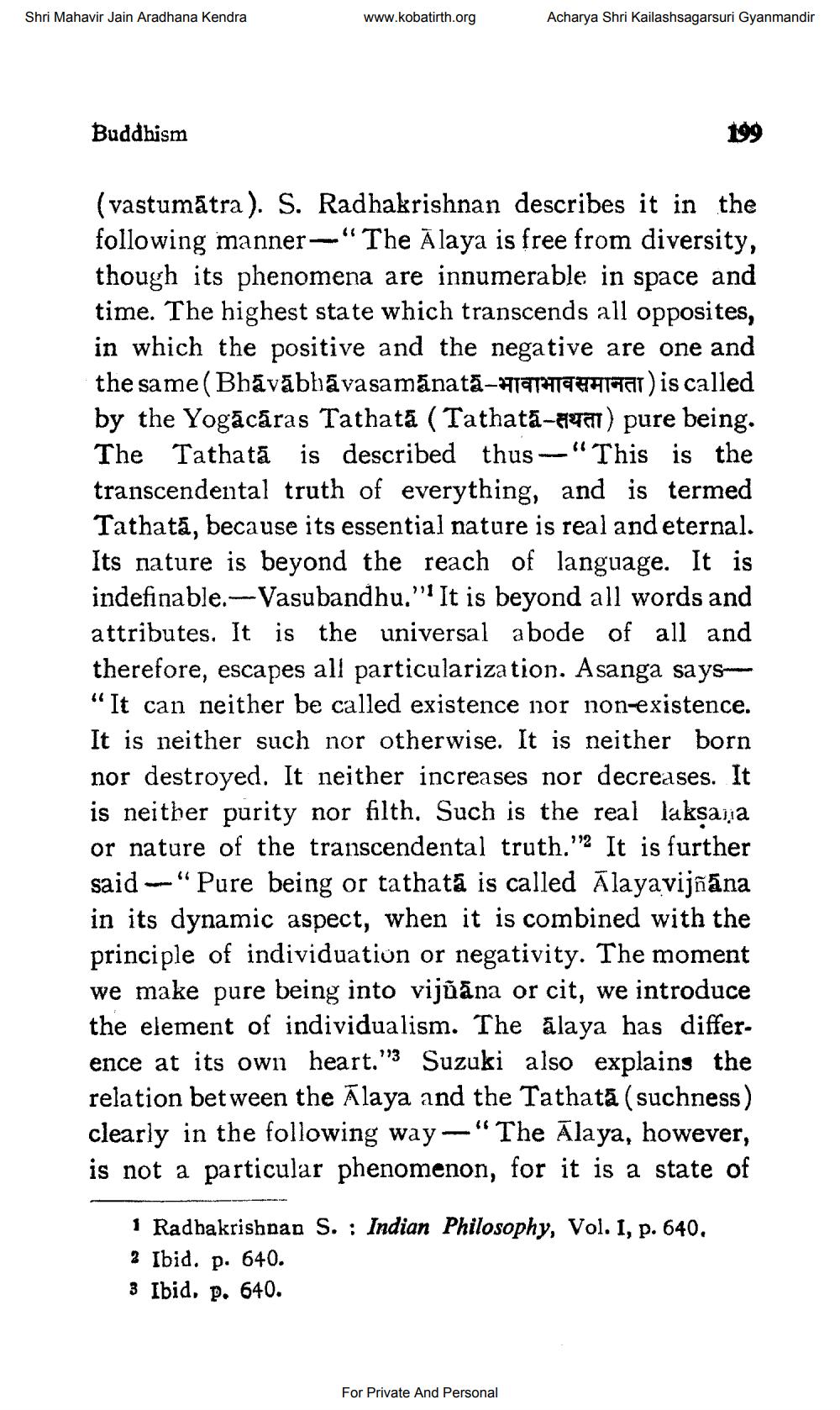________________
Shri Mahavir Jain Aradhana Kendra
www.kobatirth.org
Acharya Shri Kailashsagarsuri Gyanmandir
Buddhism
199
(vastumatra). S. Radhakrishnan describes it in the following manner-"The Ālaya is free from diversity, though its phenomena are innumerable in space and time. The highest state which transcends all opposites, in which the positive and the negative are one and the same (Bhāvābhāvasa mānatā - 1979.at) is called by the Yogācāras Tathatā (Tathatā-H9a) pure being. The Tathatā is described thus - "This is the transcendental truth of everything, and is termed Tathatā, because its essential nature is real and eternal. Its nature is beyond the reach of language. It is indefinable. --Vasubandhu.'' It is beyond all words and attributes. It is the universal abode of all and therefore, escapes all particularization. Asanga says_ "It can neither be called existence nor non-existence. It is neither such nor otherwise. It is neither born nor destroyed. It neither increases nor decreases. It is neither purity nor filth. Such is the real laksana or nature of the transcendental truth.''? It is further said “Pure being or tathatā is called Ālayavijñāna in its dynamic aspect, when it is combined with the principle of individuation or negativity. The moment we make pure being into vijñāna or cit, we introduce the element of individualism. The alaya has difference at its own heart.'3 Suzuki also explains the relation between the Ālaya and the Tathatā (suchness) clearly in the following way—“The Ālaya, however, is not a particular phenomenon, for it is a state of
1 Radhakrishnan S. : Indian Philosophy, Vol. I, p. 640, 2 Ibid. p. 640. 3 Ibid. p. 640.
For Private And Personal




